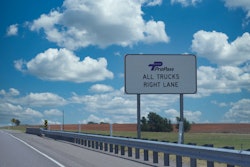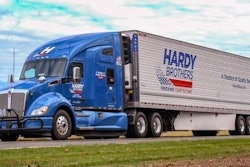Why is it that some fleets only become concerned about fuel economy when fuel prices are high?
That seems short sighted to me. Regardless of the cost, fuel represents a significant operational cost for every fleet. It's also a cost that can be managed.
The good news is that when it comes to improving fuel economy there are a variety of paths to success. Regardless of duty cycle, fleets have a host of options to choose from when trying to improve their fuel efficiency. For one fleet that answer might be adding chassis skirts. For another it might be the addition of tire pressure monitoring systems. For a third it might be switching to aluminum wheels.
Royal Jones, president and CEO of Mesilla Valley Transportation, suggests fleets explore fuel saving devices to see what works in their operation. “You have the ability to lower [the cost of fuel you consume] not by going to the customer and charging more, not by paying your drivers less, not by buying a cheaper truck, but just by taking away operating costs.”
His advice seems pretty straightforward.
[Related: Rising diesel cost puts fuel economy back in focus]
Importantly, the time to start working to lower fuel costs is now because it takes time to implement new technology. The sooner you begin determining what works for your specific application the sooner you can start reducing fuel costs.
Even if you are not ready to take big steps, there are incremental steps you can take that will lead to better miles per gallon. It's important to remember that every1% fuel savings equals four days per year you don't have to buy fuel — 8% is a month of free fuel.
Steps fleets can take to improve fuel economy
• Add trailer aerodynamics. We've seen 13 gal/1,000 miles travelled (0.9 MPG) improvement in fuel economy at 65 mph from an ordinary box van when aerodynamic devices were added.
• Switch to low rolling resistance tires. We have seen up to 8 gal/1000 miles (0.55 MPG) improvement between top SmartWay-approved tires and 12 gal/1000 miles (0.85 MPG) comparing to retreads. Unlike aerodynamic devices, this translates for any speed whether you're city or over the road.
• Move to synthetic engine oil. There have been up to 3% improvement in fuel economy going to a thinner synthetic oil. If you run a thicker oil in your fleet because of older engines, do a cost evaluation to determine if having two oils is worth the extra work.
• Upgrade your axle oil. We consistently see up to 1 gal/1000 miles (0.06 MPG) improvement with upgraded oil.
• Set cruise control parameters. Properly set cruise control parameters have resulted in a 0.5 MPG improvement — without going slower
Well-informed fuel economy decisions can save thousands of dollars per tractor or trailer over the lifetime of the asset. Investments in fuel-saving technologies are extremely profitable for fleets — especially today with record high fuel costs, but even when fuel costs are lower. I don't think there is any other investment a fleet can make that is as profitable as finding ways to save fuel.
As Jones puts it, “Why wouldn't you want to save on fuel?”












